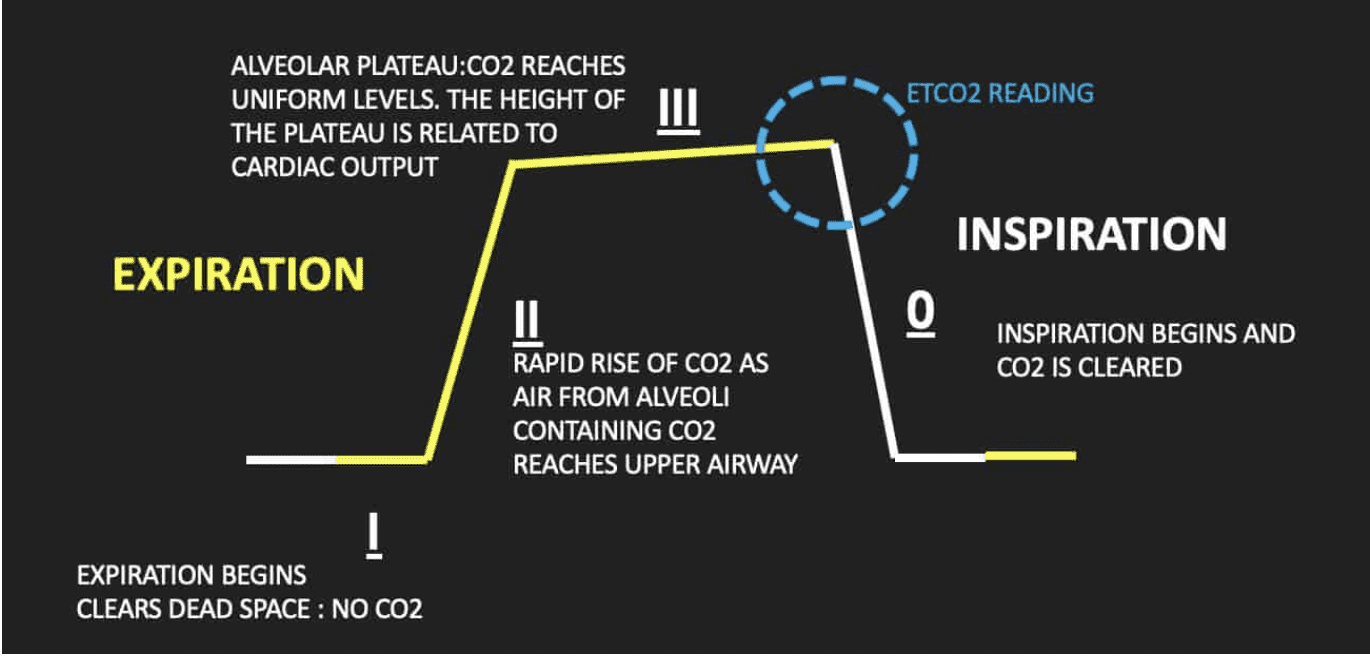Capnography to guide ventilation in cardiac arrest
Mar 27, 2024
The End tidal CO2 (ETCO2), is measured at the end of expiration and used to confirm that the patient is being ventilated and during cardiac arrest. It is also used as a surrogate marker for cardiac output. Can we also use it to trouble shoot over ventilation or airway closure?
Airway management during cardiac arrest is a controversial area and one in which there is little certainly. The goal in airway management is to adequately oxygenate and ventilate without interrupting CPR. It is for this reason that we intubate after ROSC is achieved.
Can we also use ETCO2 to determine if there is airway closure or if we are over-ventilating? In a registry study by Lesimple et al (1), they looked at the capnogram of intubated patients in out of hospital cardiac arrest. Patients were receiving manual cardiac compressions and the ventilation rate was 10 breaths per minute.
n=202
They observed 3 patterns:
- Intrathoracic Airway Closure:The oscillations due to compression/decompression are small or totally absent. There is a reduction in lung volume below FRC. This represents a partial or complete intrathoracic airway closure.
- This will require PEEP to open the airway and allow ventilation.
- Thoracic Distension: The oscillations due to compression/decompression are limited or absent at the beginning of expiration. They resume after some chest compressions. This is due to increased lung volumes above the FRC.
- This will require a decrease in tidal volume to reduce as increased intrathoracic pressure results in decreased cardiac return to the heart
- Regular Pattern: There were oscillations between compression/decompression during the whole expiration phase.

There were limitations to this study, including technical issues in the validation using the cadaver model. The capnogram only looked at one ventilatory cycle soon after intubation.
However as a pattern recognition exercise to assist in identifying these two entities that increase mortality and morbidity, it is a worthwhile exercise.
Read more about capnography patterns.
References
- Lesimple A et al.A novel capnogram analysis to guide ventilation during cardiopulmonary resuscitation: clinical and experimental observations. Critical Care. 2022;26:287
Become a member for full access to all parts of the website.

